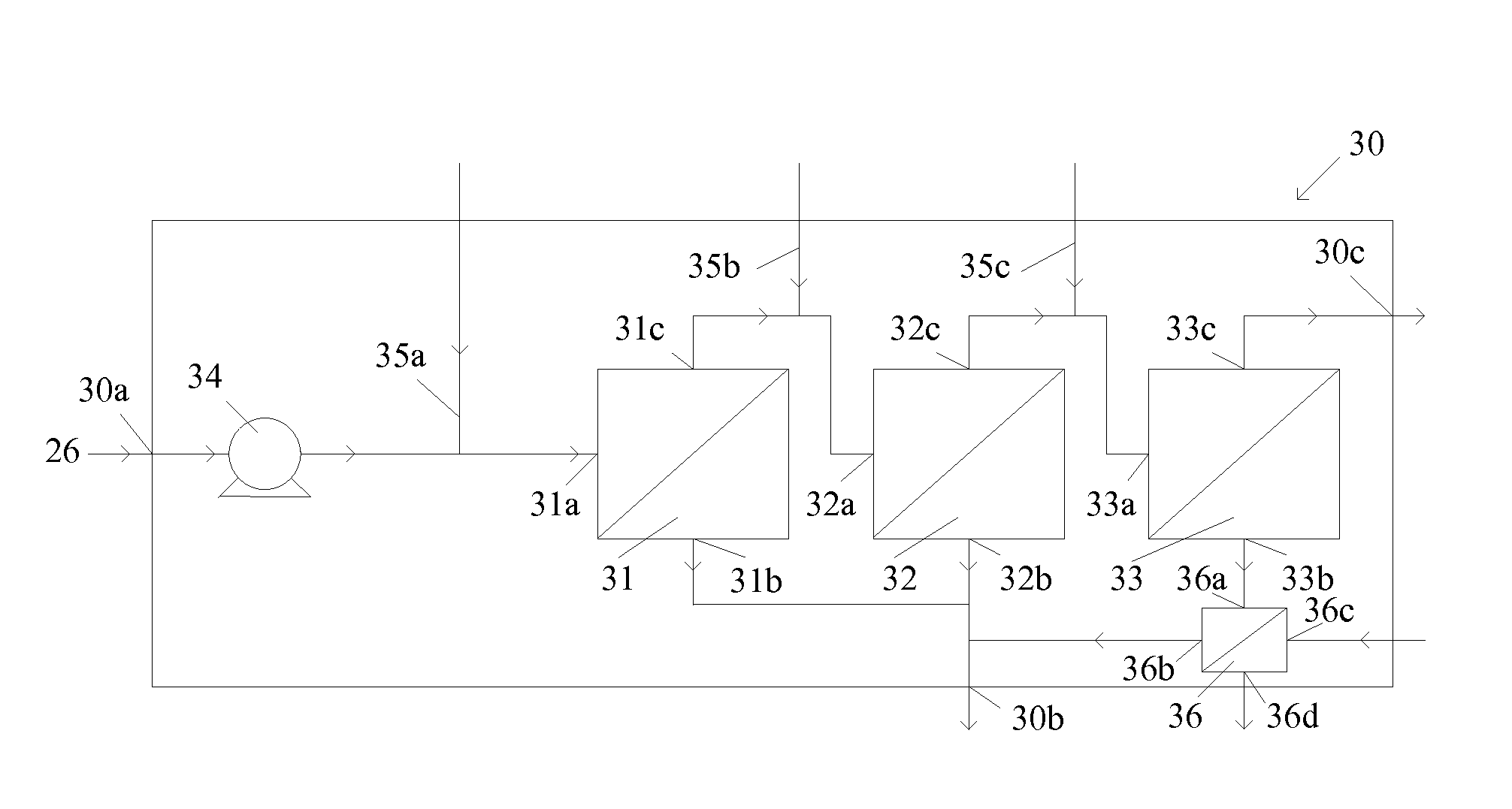Nanofiltration process for enhanced brine recovery and sulfate removal
- Summary
- Abstract
- Description
- Claims
- Application Information
AI Technical Summary
Benefits of technology
Problems solved by technology
Method used
Image
Examples
examples
[0047]Calculated models were obtained for purposes of comparing the characteristics expected of an exemplary nanofiltration system in which two dilution streams were introduced in accordance with the invention to those expected of the same nanofiltration system but without dilution streams (i.e., a conventional system). In both cases, it was assumed that the systems were provided with a spent brine stream composition from a typical chloralkali electrolysis plant. This brine stream contained 200 g / L NaCl and 10 g / L Na2SO4 and was supplied at a flow rate of 70 m3 / hr, a temperature of 75° C., and a pressure of 40 bar.
[0048]The modeled nanofiltration system 40 comprised three nanofiltration modules 41, 42, 43 in series as depicted in FIG. 4. The modules were assumed to comprise a nanofiltration filtration selected for this application. In the modeling, spent brine stream 40a was supplied initially to module 41. Two dilution streams comprising pure (i.e., demineralised) water were introd...
PUM
| Property | Measurement | Unit |
|---|---|---|
| Density | aaaaa | aaaaa |
| Density | aaaaa | aaaaa |
| Density | aaaaa | aaaaa |
Abstract
Description
Claims
Application Information
 Login to View More
Login to View More - R&D
- Intellectual Property
- Life Sciences
- Materials
- Tech Scout
- Unparalleled Data Quality
- Higher Quality Content
- 60% Fewer Hallucinations
Browse by: Latest US Patents, China's latest patents, Technical Efficacy Thesaurus, Application Domain, Technology Topic, Popular Technical Reports.
© 2025 PatSnap. All rights reserved.Legal|Privacy policy|Modern Slavery Act Transparency Statement|Sitemap|About US| Contact US: help@patsnap.com



